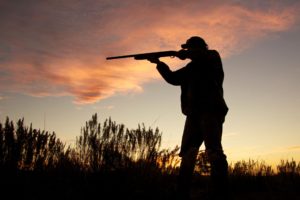In the Open: Think Safety for Deer Gun Seasons
By Jim Freeman
Ohio’s youth deer gun season got underway Saturday and continues through Sunday, and West Virginia’s buck-only gun season starts tomorrow – followed a week later by Ohio’s deer gun season, so once again it is time for my annual hunting safety message.
In recent years, more people have bought firearms from an online gun store and applied for a hunting permit. This is great news as hunting season is a wonderful time for hunters. However, most years I get a copy of Ohio’s annual Hunter Injury Incident Report for the previous year, and while each year is slightly different there are similarities that have persisted throughout the years, namely that 99.99 percent of all hunters experience a safe and enjoyable hunting experience. However, that .01 percent, the one hunter out of 25,000 in Ohio, is still unacceptable and represents room for improvement.
Hunters are far more likely to be injured in falls, heart attacks, hypothermia, and ATV accidents than by firearms, but statistics related to those other causes are not required to be reported to law enforcement agencies and are therefore not reported in the hunter injury incident reports.
To summarize, in Ohio in 2013 there were 23 total incidents, including five fatal incidents. Of the five fatal incidents, all of them involved deer hunting, with two of those being self-inflicted (discharging a firearm in or on a motor vehicle, and tying haul line to the trigger guard of a loaded firearm). In cases involving the intentional discharge of a firearm the causes were failure to identify target, victim covered by shooter swinging on game, “unknown,” victim out of sight of the shooter, and ricochet.
Accidental discharges involved hammer/trigger caught on an object, discharge of firearm into/on a vehicle, careless handling of a firearm.
In short, practically all firearms-related incidents come down to a violation of the basic rules of safe gun handling, which are: control the direction of your muzzle, be sure of your target and beyond, treat every gun with the respect due a loaded gun, and keep your finger off the trigger until you are ready to shoot.
In hunter education class, I break it down into a chain of events that must occur for the shooting to take place – someone loaded the gun, then pointed it in an unsafe direction, and then pulled the trigger. If any one of these events does not occur, the negligent shooting cannot occur. Even if there is a mechanical defect with the firearm that causes it to fire, someone must have loaded it, and had it pointing in an unsafe direction.
Media reports on firearm incidents written in the “passive” voice tend to make the firearm the doer of action, not the person. This is illogical, because no matter what you see on television, a firearm is an inanimate object; it cannot load, aim, or fire itself without the aid of a human.
Don’t be that human.
Before you squeeze the trigger, ask yourself, have I clearly identified my target, and do I know where the bullet is going to go? Because once you pull the trigger, there is no calling back that shot; it is going to go until it hits something solid.
While you can’t control other people, or predict that “bolt out of the blue,” you can take steps to help ensure that careless hunters don’t mistake you for game. Make sure you wear plenty of hunter orange, including a hat or cap, and especially carry a flashlight to light your way going into and out of the woods. In both states, the hunting hours are a half-hour before sunrise to a half-hour after sunset, from “can-see to can’t see,” so hunters will definitely be moving around in the woods in the dark. The flashlight is not so much to light your path but to identify you as a human, because the last time I checked deer don’t carry flashlights.
Ironically, the age group most likely to be involved in hunting incidents is the 40-plus segment. This may be because there are fewer young hunters these days, but I choose to believe that a lifetime of bad, unsafe habits eventually catches up to a person – you may get away with being unsafe once or twice, or even a dozen times, but eventually it comes back to bite you.
Many people heading out into the woods the next few weeks haven’t been out in the woods since this time last year, make sure you know your limitations and always keep safety in mind. As always, if you get the opportunity, make sure to safely introduce a new hunter to the experience.
Jim Freeman is the wildlife specialist for the Meigs Soil and Water Conservation District. He can be contacted weekdays at 740-992-4282 or at [email protected]










